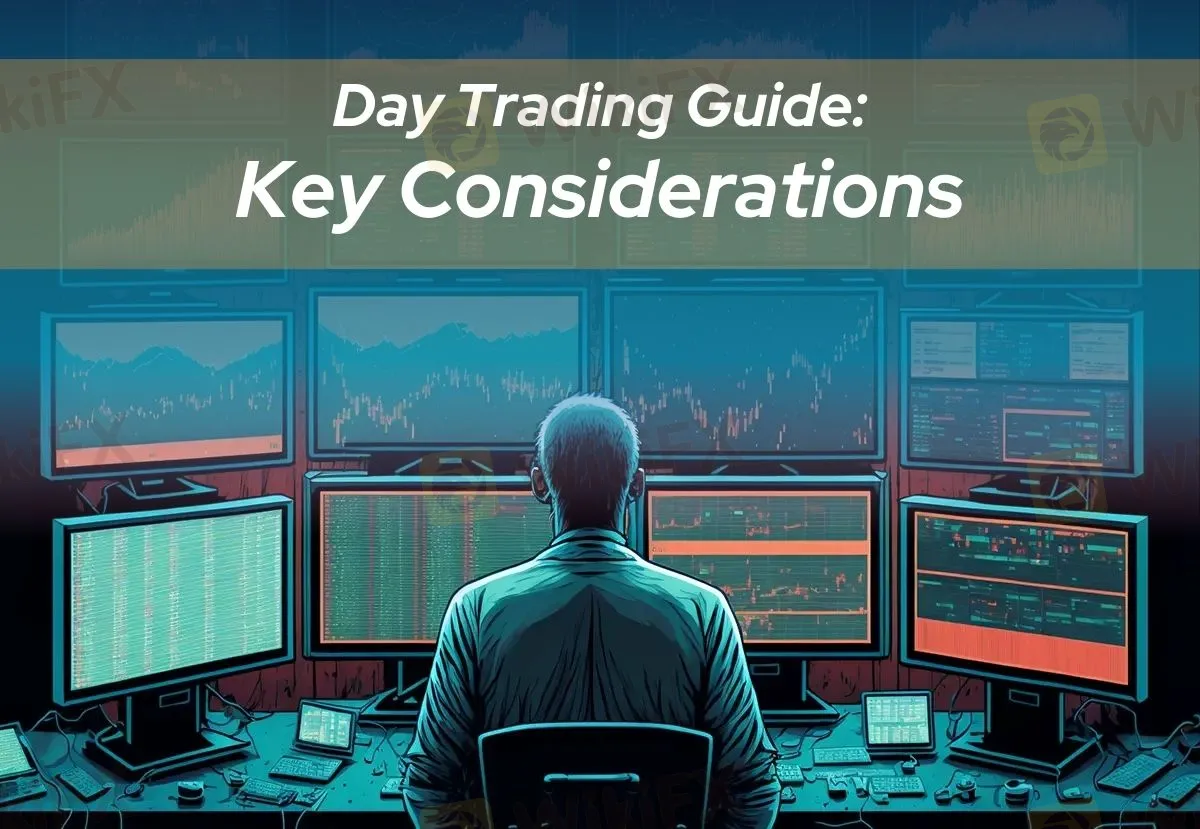Day Trading Guide: Key Considerations
Abstract:How does day trading balance freedom and precision in fast-moving markets? Learn key strategies to navigate risks and seize intraday opportunities effectively.

Day trading offers a unique allure in the financial world. It grants traders the freedom to work on their terms, capitalizing on market movements within a single trading day. This freedom, however, comes with significant challenges, requiring discipline, skill, and an understanding of complex market dynamics. As day trading gains popularity, understanding its nuances becomes essential for success.
Day trading focuses on short-term strategies, with traders seeking to profit from intraday price fluctuations. Unlike long-term investing, where patience is key, day trading demands immediate action, clear planning, and robust emotional control.
The Unique Nature of Day Trading
Day trading is distinct from other trading styles primarily because of its time horizon. Positions are opened and closed within the same trading day, minimizing exposure to overnight market risks. This approach allows traders to take advantage of intraday volatility, leveraging small price movements for potential gains.
However, the fast-paced nature of day trading requires constant attention and quick decision-making. Unlike long-term strategies, which benefit from holding through market cycles, day trading demands precision and a deep understanding of market patterns. Traders must recognize and capitalize on opportunities as they arise, often within minutes or seconds.
Key Considerations for Day Trading Success
The Foundation of a Strong Strategy
A successful day trader operates with a clearly defined plan. This plan should outline entry and exit points, position sizes, and risk management parameters. For example, identifying support and resistance levels using technical indicators such as moving averages or relative strength index (RSI) can enhance decision-making.
Managing Risks Effectively
Risk management is a cornerstone of day trading. While profits are the goal, protecting capital is paramount. Traders should determine their risk tolerance and set strict limits on the amount of capital they are willing to risk on each trade, typically no more than 2-3%.
Emotional Control and Discipline
Emotional discipline is perhaps the most challenging aspect of day trading. Fear and greed often disrupt rational decision-making, leading to impulsive actions that undermine trading plans. Traders must learn to detach emotions from their decisions and stick to their strategies.
Conclusion: A Path to Mastery
Day trading is not merely about making quick profits; it is a disciplined art that demands strategy, risk management, and emotional control. By developing a comprehensive approach that integrates these elements, traders can navigate the complexities of financial markets and work toward consistent success.
Read more

CySEC reaches €20k settlement with ZFN EUROPE
According to report, the Cyprus Securities and Exchange Commission (CySEC) announced today that it has entered into a settlement agreement with ZFN EUROPE Ltd for the amount of €20,000. This settlement resolves a regulatory inquiry into ZFN Europe’s compliance with Cyprus’s Investment Services and Activities and Regulated Markets Law of 2017, as amended.

Prop Trading Firms vs. CFD Brokers: Who’s Winning the Retail Trading Race?
In recent years, a new breed of retailer-focused trading firms has emerged: proprietary (prop) trading outfits that recruit individual traders to trade the firm’s capital under structured rules. Boasting low entry costs, clear risk parameters, and profit-sharing incentives, these prop firms are rapidly winning over retail traders, many of whom previously traded Contracts for Difference (CFDs) with established online brokers. As prop trading revenues accelerate, a key question arises: Are CFD brokers losing business to prop firms?

Another ‘Tan Sri’ Targeted, RM347 Million in Assets Seized in MBI Scam
Malaysia’s police are stepping up their investigation into the MBI investment scam, a multi-billion ringgit fraud that has dragged on for nearly a decade. The Royal Malaysian Police (PDRM) is now planning to arrest another prominent figure with the title ‘Tan Sri’, following recent arrests and major asset seizures.

Tradu Joins TradingView for Seamless CFD and Forex Trading
Tradu, a global trading platform, integrates with TradingView for seamless CFD and forex trading, offering transparency, tight spreads, and fast execution.
WikiFX Broker
Latest News
Love, Investment & Lies: Online Date Turned into a RM103,000 Scam
Broker Took 10% of User's Profits – New Way to Swindle You? Beware!
Pi Network: Scam Allegations Spark Heated Debate
Broker Comparsion: FXTM vs AvaTrade
Account Deleted, Funds Gone: A New Broker Tactic to Beware Of?
Broker’s Promise Turns to Loss – Funds Disappear, No Compensation!
StoneX Subsidiary, Gain Global Markets Bermuda, Penalized for Trading Misconduct
El Salvador and U.S. Launch Cross-Border Crypto Regulatory Sandbox
The Instagram Promise That Stole RM33,000
Coinbase Launches Bitcoin Yield Fund for Institutional Investors
Rate Calc
